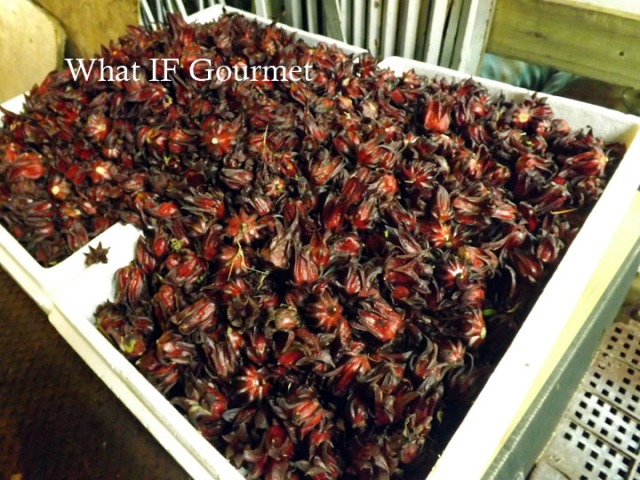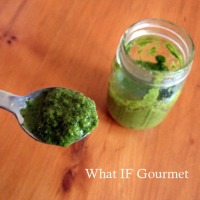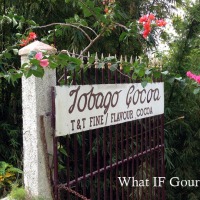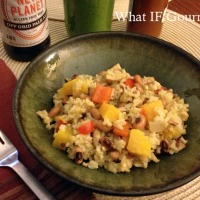If you follow a gluten-free diet and are traveling to the lovely sister-islands nation of Trinidad & Tobago, then you need an Aunty Arlene. In fact, even if gluten poses you no risk, you should still hope to experience such generous and considerate hospitality as the Midwestern Gentleman and I enjoyed on our recent trip to the West Indies. My friend Danielle has been inviting me to visit her native island of Trinidad since we graduated together from library school in 2009. After years of promising to do so, the Gent and I finally made the visit a reality in January. I had heard of the legendary Trini hospitality, but nothing prepared me for the generous care that Danielle devoted to making our experience the best it could possibly be. She planned an activity-packed itinerary to showcase the best of Trinbagonian culture, welcomed us into her home, chauffeured us around both Trinidad and Tobago (our visit to the “sister island” will be the subject of another post), and accommodated endless questions and food-related quests. As if her own exceptional hospitality were not enough, Danielle also brought us to the home of her godmother, Aunty Arlene, who works in a government ministry by day and runs her own catering company on the side, for a number of amazing gluten-free meals that started with traditional Sunday dinner.

Sunday dinner at Aunty Arlene’s. Clockwise from top left: pigeon peas, cassava, stew pork, mixed vegetables, cinnamon plantains, bbq chicken, yellow rice, callaloo, and macaroni pie (center).
Sunday Dinner
According to Arlene’s daughters, the usual, run-of-the-mill Sunday dinner might include four or so dishes, rather than the 10-dish feast we experienced, but Arlene was clearly pulling out all the stops for us. The menu included spicy, saucy pigeon peas, cassava (a.k.a. yucca), and stew pork (the past tense is always left off of dish names, so stewed pork becomes “stew pork” and boiled corn becomes “boil corn” and so on). Then there were the buttery, fresh, mixed vegetables, cinnamon fried plantains, and sweet and spicy bbq chicken. Yellow rice soaked up the sauces of the other dishes. The soupy dish callaloo is made with a sweet, spinach-like green called dasheen, as well as okra, onion, and hot pepper. The only dish I did not sample was the macaroni pie, a baked version of macaroni and cheese. The Gent assured me it was just as delicious as the other dishes, but I didn’t mind not being able to sample it. I was far too full!
While lemonade and iced tea are popular hot weather drinks at home, in Trinidad, tangy-tart sorrel drink and bittersweet mauby are the drinks that Trinis brew up at home or buy already bottled.
At Arlene’s, we were treated to a fresh batch of mauby, which is made by first simmering the bark of the mauby tree with anise seeds and bay leaf, adding sugar and flavor extracts, and then serving over ice. It was an interesting, strongly tannic flavor, but not as enjoyable as I found the tangy-tart sorrel drink, which is brewed from the petals of a flower related to hibiscus.
We rounded off the evening with a special treat — homemade soursop ice cream. I’m at a loss how to describe the flavor of soursop, which was at once familiar and unplaceable, sour and delicately fragrant. It was perfect in ice cream, and I just couldn’t say no to a second helping.

Fresh soursop at a market in Port-of-Spain on the left; Arlene’s homemdae soursop ice cream, already melting in the tropical heat, on the right.
Traditional Trinbagonian Breakfast: Coconut Bake with Salt Fish (bul jol)
A popular breakfast in Trinidad is coconut bake with salt fish, tomatoes, and peppers. “Bake” refers to any sort of bread-like item, and, confusingly, can also refer to deep-fried dough, as in the case of bake and shark, in which the “bake” is fried. Coconut bake is a delicately flavored, biscuit-like flatbread, which is split in half and spread with fish, meat, or vegetarian fillings, often for breakfast.

Traditional coconut bake, with gluten-free coconut bake (looking more like a pita) peeking out from behind.
Aunty Arlene made traditional coconut bake for the Gent and Danielle, with a special order of gluten-free coconut bake for me. Although my bake was not as lofty as the traditional version, Danielle assured me its flavor was right on target. I thought it was perfectly delicious, especially loaded with salt fish and dressed with mango amchar and tamarind sauce (one of the favorite Trinidadian condiments).
Street Food: Aloo Pies and Corn Soup
Street food makes up a huge part of Trinidadian food culture. I highly recommend the book Caribbean Street Food: Trinidad & Tobago, which delighted Danielle with its accurate depictions of local street food, complete with expected prices. It contains a wealth of information about the ingredients, culture, and etiquette that shape the street food experience on these islands. Two local street foods particularly caught my attention: aloo pie, and corn soup. Sadly, both contain wheat flour, so I resigned myself to missing out on them. Aunty Arlene to the rescue! This intrepid chef was determined to help me experience gluten-free Trinidadian fare, and she came up with (confirmed by Danielle) incredibly authentic renderings of both these dishes in gluten-free form. I’m sad to say I failed to take a decent photograph of the thick, spicy corn soup — what I would call a chowder — afloat with disks of corn on the cob and bite-sized dumplings. Now I understand why the “corn soup man” always has a long line of customers waiting patiently at his food truck.
The aloo pies were hand-held pastries stuffed with spiced mashed potatoes, which we then drizzled with tamarind sauce and peppersauce to taste. They were delicous comfort food at its best!
Thanks to Aunty Arlene, I was able to experience far more of Trinbagonian cuisine than I would have been able to otherwise. Her generous home cooking and warm hospitality made our visit to Trinidad and Tobago incredibly special, and cooked up memories that will last a lifetime.
















Pingback: Home Gourmet Kitchen Blog Posts | thehomegourmetkitchen.com
How special to get such an intimate experience of the culture from your friend and her relatives! The generosity you receive as a traveler can be so humbling. I hope you pass on some of these Caribbean recipes, I’d love one for the GF aloo pies!
Wow, I am so late for the party. 2016. Maybe you are still there. Thankyou for the beautiful photographs, everything looks so delicious!…! Took me home. I told my sis we cannot eat the same way. I know I cannot. You gave me hope. If you are still there I will follow. Thanks. You took me home….sweet memories.